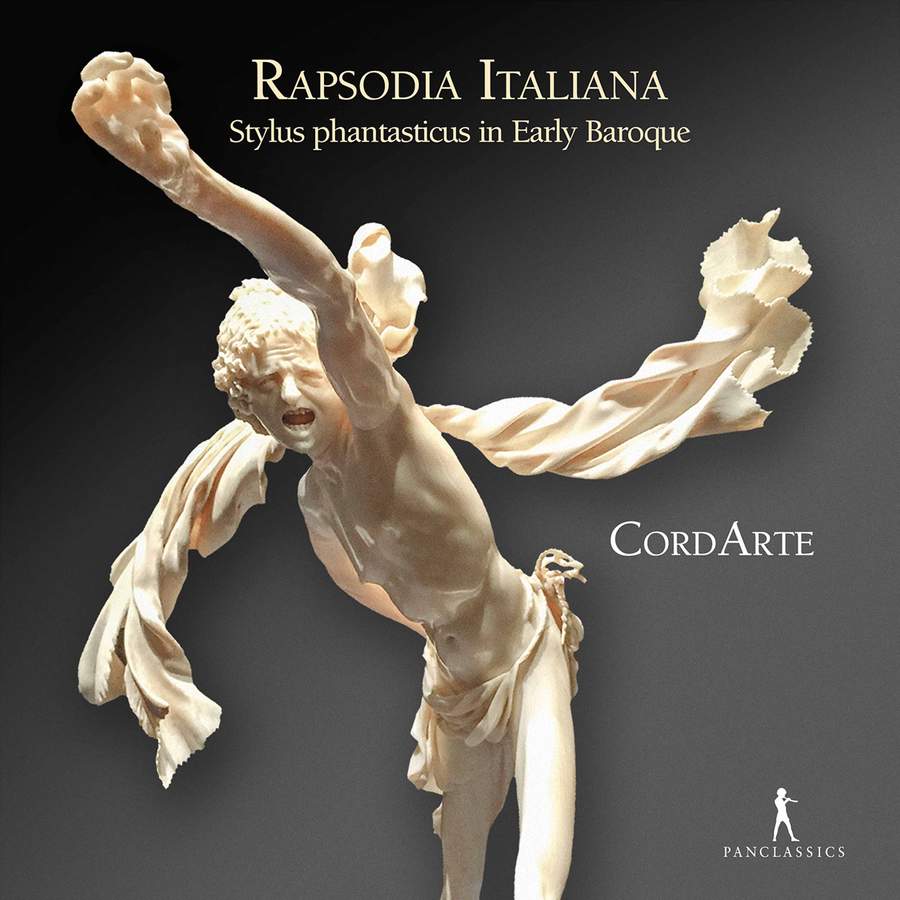Rapsodia Italiana: Stylus Phantasticus in Early Baroque
A truly illuminating experience, both beautiful and educational - all in stunning performances

Bernd Heyder's booklet notes for this disc sum up better than I could the idea of the style from the Baroque period known as the Stylus phantasticus:
Rhapsodic, free instrumental music in which virtuosity provided the emotional focus and compositional inspiration occasionally strayed from the strict rules of harmony. It was named by the Jesuit scholar Athanasius Kircher, in 1650, as the “stylus phantasticus”.
These are virtuoso performances: Damiel Deuter, as violinist, takes the burden on his shoulders; Heike Johanna Lindner is the viola da gambist, while Markus Märkl plays harpsichord and organ (2009).
One can hear free dialogue between violin and harpsichord in the Frescobaldi's Toccata per Spinetta è Violino:
There are discoveries everywhere on this disc. Brescian composer Giovanni Battista Fontana, from the so-called “city of violins,” offers a simply remarkably inventive sonata (Sonata quinta):
.. and just listed to the sheer beauty of the organ in Vincenzo Bonizzi's Diminution on “La bella notte netta iguada e bianca mano”:
One can clearly hear the traits of the Stylus phantasticus in Frescobaldi's Cento Parite sopra Passacagli, for solo harpsichord, which laads straight into the far richer textures of Stradella's Sonata:
The remarkable thing about this aspect of Baroque music, the Stylus phantasticus, is that while on the surface one might think it all show, it can carry the most remarkable amount of pathos as well. Try this, a piece by Giovanni Pandolfi-Mealli (1624-1687), his Sonata “La Stella,” Op. 3/1 performed with glistening organ alongside Denter's remarkable articulation on the violin (the other piece by this composer that appears later in the album, the Sonata La Castella, Op. 3/4, contains similar delights):
... or here, in Dario Castello's Sonata sesta, from a set of six sonate concertate written “in stil moderno”:
Another aspect of this style is that it is perfect for diminuion (variation, in the Baroque sense), as in this piece by Riccardo Taeggio (1545-1620). The actual theme is taken from Cipriano di Rore's Anchor che col partire (below, so you can hear the link - try listening to the Taeggio, then the Rore then back to the Taeggio and see if you hear the processes in any more detail - I've chosen a beautiful performance of the di Rore by Qvinta Essençia - and do watch it as well as listen, the visuals are very, very striking):
We have met Giovanni Legrenzi (1626-2690) not once, but twice, before on Classical Explorer: his Harmonia d'affetti devoti, Op. 3, and his Compiete, Op. 7 both on Naxos. If you liked those two you will not be disappointed by the masterful invention this piece La Foscari, the eighth of his 18 Sonatas (and how well it segues into the Frescobaldi organ Toccata and the finale Sonata ex a by Padre Marianus, 1657-1701):
A truly illuminating experience, both beautiful and educational - all in stunning performances. Here’s the full disc on one YouTube, video performances of exactly what’s on the disc (the actual posting on the YouTube site has exact start points for each piece):
